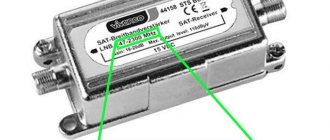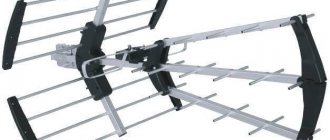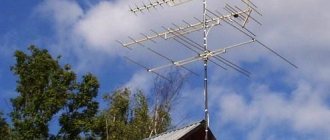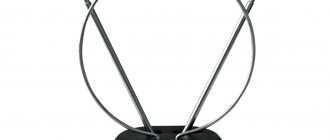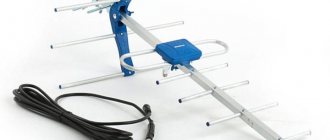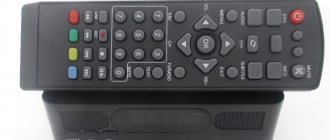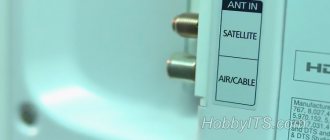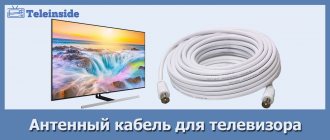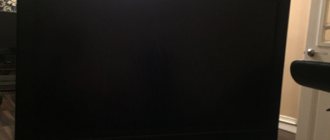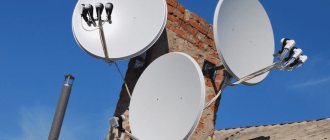To improve the TV signal, in city apartments or in rural areas, TV amplifiers are installed. The device is designed to improve the television range and eliminate interference. These amplifiers can also be used to reduce signal loss in the cable. The device itself is small, affordable and can be installed independently. The only thing to remember is the correct choice of model. Let's take a closer look at how to choose a television signal amplifier, as well as its main technical features.
- Popular models
EUROSKY SWA-555
- Planar 21-69FT
- Locus LA-21
- Terra HA126
- In conclusion
What is a TV signal amplifier used for?
If the TV does not receive a signal from a satellite dish or coaxial cable, then the only option left is through an outdoor or indoor antenna.
The transmission is carried out like this: towers that are installed at a certain distance relay the signal transmission. Televisions, thanks to the presence of an antenna and a digital set-top box, record signals and automatically convert them into a video stream accompanied by sound.
To stabilize and improve the signal, a variety of home antenna amplifiers are used. Thanks to its work, a person can see a clear picture and hear high-quality sound.
Principle of operation
Amplifiers have different design features, but perform the same function. Some of them may consist of several boards, each of which is responsible for reducing noise and interference. One circuit acts as a high-frequency filter, the second has a microcircuit that allows for frequency adjustment.
Field adjustment allows, at a frequency of 400 MHz, to achieve a maximum gain of 4.7 dB. Some amplifiers are powered by 12V, and in fact can be powered by a simple car battery. For maximum stability, a stabilizer is installed, the circuit of which contains an electrolyte and a special diode bridge.
The amplifier is connected to the antenna using a coaxial cable and using a special choke. The connection to the TV occurs through a special capacitor.
How to connect a TV signal amplifier
What is an antenna amplifier for a TV?
A television amplifier is a device for amplifying a television signal and reducing the level of interference, which ensures the display of a higher quality picture. The device helps to increase sensitivity, limited by noise effects, and compensate for losses of the received television signal in the coaxial cable.
Design features of the antenna amplifier
Amplifiers for television antennas are simple in design and can vary in design; they can amplify both digital and analog signals. In some cases, they are formed by two boards with an implemented noise reduction circuit. One circuit is a high-pass filter, the second has a capacitor that regulates frequencies.
The regulator helps to obtain a maximum TV signal gain of 4.7 dB with an operating frequency of 400 MHz. To obtain stability, they use a stabilizer with an electrolyte and a diode bridge included in its circuit. The amplifier is connected to the television receiver using a capacitor.
All antenna amplifiers are equipped with a power supply; only its location differs (built-in and external). The built-in device functions well with a stable electrical voltage and will consume up to 10 V. If the device burns out, the entire antenna device will need to be replaced. For this reason, in the presence of power surges, it will be more convenient to use external units. They are larger in size and have different input voltages depending on the amplifier (5, 12, 18, 24 V).
Classification
For on-air waves, TV channels use a range of meter (MV) and decimeter (UHF) frequencies. In the first case, a frequency of 30-300 MHz is used, and in the second - 300-3000 MHz. Depending on the range of the received frequency, the amplifier can be:
- broadband - to cover a wide wave spectrum;
- band - uses the meter or decimeter range for work;
- multi-band , designed for both bands.
In the usual case, with a good signal, a wideband amplifier is sufficient. If reception is poor, you should use a narrowly targeted device, which performs its role better than a broadband device in a certain range.
Digital broadcasting is carried out using the DVB-T2 standard. For digital TV channels, only the UHF range is used, so an amplifier for digital television of the DVB-T2 standard is suitable for digital television broadcasting.
Test of antenna amplifiers for digital television DVB-T2:
Amplifiers also differ according to the required voltage:
- Twelve-volt ones are the most common. They will require the addition of an additional power supply, which in some cases can be regulated.
- Five-volt ones can be connected to a TV tuner or TV using a coaxial cable. As a rule, they are attached to the antenna.
Depending on the type of television, amplifying devices are classified in the following order:
- antenna;
- satellite;
- cable
Cable and satellite amplifiers are used very rarely, because they already transmit a very high-quality signal. Sometimes with cable television they use an amplifier if the cable is connected to several TVs at once. Antenna amplifying devices are used much more often.
Advantages and disadvantages of TV signal amplifiers
When setting up a home television network, you should remember: if you use several amplifying circuits, the video stream will be significantly distorted. In this regard, the number of amplifiers for antennas should be minimal.
The advantages of amplifiers include:
- the ability to receive even the weakest TV signals;
- presence of small noise coefficients;
- the ability to amplify the signal simultaneously across several frequency ranges.
The disadvantages of amplifying devices are:
- if a broadband amplifier is used, there is a possibility of overloading the permissible level of the TV signal, so it must be equipped with a regulator for different ranges to eliminate such a nuisance;
- self-excitation of the device;
- susceptibility to thunderstorms;
- probability of TV signal loss at the output.
Amplifiers correct the signal from the antenna to the TV. In this regard, the choice is influenced by the terrain and the need for television equipment. An amplifier for a TV antenna outside the city helps to effectively solve the difficult issue of obtaining a high-quality television signal.
Types of TV signal amplifiers
The division is carried out according to two main parameters:
- at the installation site;
- by frequency.
This is typical not only for standard antenna signal amplifiers, but also for existing analogues.
Depending on the frequency range there are 3 types:
- Broadband. Broadband amplifiers are designed to operate in the UHF and VHF bands, which are intended for digital television.
- Range. Range, designed to amplify the signal within a strictly defined radius (meter or decimeter). The main function is to reduce the noise level that occurs as the cable length increases.
- Multi-band. Multi-band devices operate at different frequencies and receive signals from several sources simultaneously.
Depending on the location of the amplifier, there are internal and external (mast) options.
- External, installed on the television antenna directly at the match. They have a powerful fastening.
- Internal ones should be located in relative proximity to the receiver. They have a significant disadvantage - the longer the cable, the greater the signal loss.
Amplifiers for active antennas
The most common of them are SWA amplifiers. Such antenna amplifiers for digital television dvb t2 are the main ones for the so-called “Polish” antennas or “arrays”.
No matter how much people criticize this amplifier, it performs excellently when receiving over long distances; the main positive quality is that it can withstand close lightning discharges. But SWA555 and SWA777 have proven themselves extremely negatively. They fail not just because of a thunderstorm, but just like that.
They are powered by 12 volts from a separate power supply.
LSA amplifiers were produced for repairing Locus antennas. The main reasons why they fail are a lightning strike, a malfunction of the power supply and sometimes a violation of the seal of the case. When moisture gets on the amplifier, the conductive paths are destroyed and it fails.
Considering that the Delta antennas with an amplifier are similar to the Locus antennas, these amplifiers were installed on them as well.
Criterias of choice
When purchasing an amplifier, you should be guided by the installation location, as well as its technical characteristics.
The main criterion is functionality, because it is they who are responsible for the quality of the signal. Let's consider additional characteristics that you should definitely pay special attention to.
frequency range
The TV, antenna and amplifier directly are connected to each other through a range of certain frequencies. Initially, select the antenna. At the same time, be sure to remember that narrow-range ones have more advantages compared to wide-range ones and the signal will be more powerful.
For example, if the signal reception area is close to the repeater, then you can buy a wide-band antenna. But from a television tower, the best signal will be received by a device that has a limited frequency range (for example, UHF or MV).
Active or passive
Amplifiers are divided into:
- active;
- passive.
Passive ones can work offline, while active ones require a constant power source. The connection occurs via a standard 12 V adapter. When installing the amplifier outdoors, it must be carefully protected from bad weather conditions.
Example of an active TV signal amplifier
Noise figure
The signal-to-noise ratio must be adjusted upward by amplifiers. However, depending on the model, different noise levels come in, so with a strong signal they will be more pronounced.
Ideally, the noise should be up to 3 dB, which is a guarantee of high signal quality. Modern TV signal amplifiers boast a noise level of up to 2 dB.
Gain
There is a misconception that with a high gain the signal will be significantly better. Excessive gain causes distortion resulting in overload or clipping.
Gain is measured in decibels. The average value is:
- meter – 10 dB;
- decimeter - from 30 to 40 dB.
Meter channels cover up to 12 channels, while decimeter channels can cover both 22 and 60 channels. To choose the right amplifier, you should choose a device that can be adjusted.
Comparison table of the presented models
To visually compare the models presented above, we use a comparison table.
| Model | Frequency (MHz) | Gain (dB) | Dimensions (mm) | Weight, kg) | Price, rub) |
| Terra HS004 | 47-862 | 34-44 | 135x180x52 | 0.7 | from 3,200 to 3,780 |
| Alcad AL-200 | 47-862 | 14-24 | 101x57x28 | 0.4 | from 1,350 to 1,600 |
| Rexant 05-6202 | 5-2500 | 25 | 60x40x20 | 0.1 | from 190 to 380 |
| Lans LX-50 | 47-862 | 16-20 | 88x76x20 | 0.2 | from 980 to 1,100 |
| One For All SV9345 | 87-862 | 43 | 43x43x213 | 0.7 | from 2,399 to 2,899 |
| REMO BAS-1321 | 87-862 | 43 | 1050x290x90 | 2.3 | from 1,760 to 2,030 |
| Harper ADVB-2440 | 87-862 | 30 | 115x115x235 | 0.5 | from 1,399 to 1,670 |
Popular models
Affordable price and ease of installation make some TV signal amplifiers very popular. The convenient layout allows you to carry out repairs yourself in the future.
Let's take a closer look at some popular models and their characteristic features.
EUROSKY SWA-555
The protective case contains a double circuit board. The noise level is 2.2 dB, the gain is in the range of 10-43 dB and directly depends on the conditions. Well suited for installation in outdoor antennas and arrays. Signal reception at a distance of 1 to 150 km.
EUROSKY SWA-555
Planar 21-69 FT
Operates in frequencies from 470 to 862 MHz. Powered by a 12 V source, gain up to 22 dB. It has its own protection against moisture, can be installed outside, and is quickly installed. An analogue is model 21-69 DIGITAL FT.
Planar 21-69 FT
Locus LA-21
The amplifier is made in a durable metal case. Connects to the cable via the “F” connector. Gain up to 22 dB, frequency 48-862 dB.
Locus LA-21
Terra HA126
Amplifier for digital and cable television with gain up to 36 dB. This passive model can operate at a distance of up to 40 km. Used indoors only, can only work with one DVB T2 set-top box or one TV.
Terra 126
Rating TOP 7 best amplifiers for digital antenna
Having analyzed the market segment of these products, we have compiled a rating:
- Terra HS004.
- Alcad AL-200.
- Rexant 05-6202.
- Lans LX-50.
- One For All SV9345.
- REMO BAS-1321.
- Harper ADVB-2440.
Let's consider each model separately.
Terra HS004
Amplifier from the famous Terra company. Model HS004 is made of a durable die-cast housing and has a built-in power supply. Power is supplied via the RF input. Overload protection and indication are also provided. LTE signals are suppressed by a special built-in filter. Band splitting is provided with separate gain and slope adjustments in the VHF (47-414 MHz) and UHF (470-862 MHz) bands. The device can operate in the cold (-20°C) and in the heat (+50°C). Power consumption is low and is only 5V.
| frequency range | 47-862 MHz |
| Gain | 34-44 dB |
| Dimensions | 135x180x52 mm |
| Weight | 0.7 kg |
Price: from 3,200 to 3,780 rubles.
- wide temperature range (from -20 to +50°C);
- there is a special filter that suppresses LTE signals;
- the presence of “ears”, thanks to which the device is mounted on the wall with ordinary screws or bolts.
- not detected.
I bought this miracle piece of technology two weeks ago, and I already have some impressions that I want to share. The model has one input, but inside the amplifier the entire range of the television signal is divided into two subranges: MV and UHF. In each of the sub-bands there is a gain and frequency response slope adjustment, two attenuators and a stepless gain and frequency response slope control. The output signal is formed by summing the signals from the VHF and UHF subbands of the amplifier. The case is strong, moisture-resistant and beautiful.
Terra HS004
Alcad AL-200
The wideband residential amplifier from the Spanish company Alcad is one of the most popular on the Russian market. It is highly reliable and is designed to amplify television signals in the UHF and meter wavelength range; it has one antenna input and two outputs. Typically used to distribute a television signal to several televisions in a house or apartment. The device also has separate gain controls for the MV and UHF ranges, ranging from 0 to 15 dB. The amplifier operating frequency range is from 47 to 860 MHz.
| Dimensions | 101x57x28 mm |
| Weight | 0.4 kg |
| frequency range | 47-862 MHz |
| Gain | 14-24 dB |
Price: from 1,350 to 1,600 rubles.
- low noise figure (4.5 dB);
- versatility (equally good for amplifying cable and digital signals);
- There is a function for dividing the signal into streams (2 streams).
- allows for reduced efficiency at frequencies from 318 to 470 MHz.
Good afternoon I recently purchased this amplifier model for my TV, which has been receiving a poor signal lately. Overall it was more than helpful. There is separate adjustment for the MV and UHF ranges. Factors such as high power (gain up to 24 dB) and low noise level encourage the purchase. It is one of the most effective solutions for amplifying the signal received by one antenna for the whole house. Fully compatible with the DVB-T2 standard.
Alcad AL-200
Rexant 05-6202
A television divider is a convenient means for dividing a signal into several equal parts. Antenna splitters, also called television splitters, are used in cases where it is necessary to connect one television cable coming from the antenna to several televisions or receivers at once. This is especially true in multi-room apartments or country houses. The divider has one input for an F-connector and three outputs also for F-connectors. The signal supplied to the input of the divider is divided into two equal parts and transmitted to the outputs. Standard F-connectors are used to connect cables.
Interesting: Rating of the TOP 5 best ring lamps: which one to buy, colors, characteristics, reviews
| Weight | 0.1 kg |
| Gain | 25 dB |
| Dimensions | 60x40x20 mm |
| frequency range | 5-2500 MHz |
Price: from 190 to 380 rubles.
- high gain (up to 25 dB);
- compactness (60x40x20 mm);
- small weight (100 g).
- reliability (one of the splitter branches often fails).
This model is convenient when it is necessary to divide the signal into several used devices or amplify it to the limit. The size and lightness of the unit are one of its trump cards. At the same time, the power of the model is in no way inferior to its analogues, and in some places even exceeds it. It will be a relevant solution in multi-room apartments or country houses. To connect the cable, the manufacturer decided to install standard F-connectors, which is very good. In general, during operation I did not find any critical deficiencies, I recommend it.
Rexant 05-6202
Lans LX-50
Another model of a fairly compact digital signal amplifier. It costs significantly less than analogues, but in other respects it is in no way inferior to its competitors. The main advantage of the device is its versatility. The amplifier is broadband, which means that it supports several bands at once. As a result, it can reliably handle frequencies from 47 to 862 MHz. The accessory is powered by a traditional 220 V network. Despite the low cost, the model is equipped with a gain control, which is quite convenient.
| Gain | 16-20 dB |
| Weight | 0.2 kg |
| Dimensions | 88x76x20 mm |
| frequency range | 47-862 MHz |
Price: from 980 to 1,100 rubles.
- small dimensions (88x76x20 mm);
- adjustable gain (16-20 dB);
- light weight (200 g).
- only one F connector.
I came across this device a year ago, but I was able to decide to write a review only today. I will try to keep it short and clear. Having purchased the device, you will immediately notice its appearance; here it is unremarkable - an ordinary iron box. The range of audible frequencies is large (47-862 MHz). All characteristics correspond to the declared ones. When purchasing, be sure to ensure that you are getting a power supply.
Lans LX-50
One For All SV9345
The One For All SV9345 digital indoor antenna is designed to receive DVB-T, DVB-T2 stations. The device can be installed on any surface indoors, after which it can be quickly set up and operated without problems. One For All SV9345 has a reception angle of 90 degrees, thanks to which you will be provided with a decent image on TV. The product is equipped with a GSM unit, which acts as a filter, which is important for a clearer signal. The antenna has a stylish black and white color and an ergonomic design, which allows it to fit harmoniously into any interior.
| Weight | 0.7 kg |
| frequency range | 87-862 MHz |
| Gain | 43 dB |
| Dimensions | 43x43x213 mm |
Price: from 2,399 to 2,899 rubles.
- long cable (1.5 m);
- powerful amplifier (43 dB);
- has support for all-wave reception.
- not found.
The manufacturer recommends using the antenna at a distance of 15 km from the source. If you have a longer distance, do not be alarmed; it works fine for me at a distance of 30 km. Supports power from a regular USB port, which is equipped on almost any TV. This frees up one slot in the surge protector and does not waste electricity when the TV is turned off. Overall the device is very powerful and easy to use. I definitely recommend it to everyone.
One For All SV9345
REMO BAS-1321
The uniqueness of this model lies in the fact that it is equipped with a powerful amplifier capable of receiving signals from great distances and leaving the picture at the highest level. The main features include: all-wave signal, versatility and light weight. Also, many buyers like the modern design and black color of the device. It is installed outside the room and is powered through a special adapter.
| Gain | 43 dB |
| Dimensions | 1050x290x90 mm |
| Frequency range | 87-862 MHz |
| Weight | 2.3 kg |
Price: from 1,760 to 2,030 rubles.
- pre-installed amplifier;
- high resistance (75 Ohm);
- versatility (works with analog and digital signals).
Interesting: Best wireless in-ear headphones: rating
- not found.
The BAS-1321 antenna is equipped with an amplifier and power supply, so it is suitable in areas of poor signal reception. Effective in city conditions, as well as in the suburbs. Equipped with a corner reflector, thanks to which the gain in the UHF range increases by 3-5 dB. It is characterized by an increased long traverse and the presence of 6 UHF range directors. Receives DVB-T2 digital and analog television signals.
REMO BAS-1321
Harper ADVB-2440
Harper ADVB-2440 is an outdoor antenna with an active amplifier that provides a gain of up to 30 dB and noise of no more than 3 dB. The delivery set includes fastenings for installing the Harper ADVB-2440 on linear supports and flat bases (wall, roof, etc.). The spherical shape of the antenna eliminates the need to find the most favorable direction for signal reception (no need to turn the Harper ADVB-2440 towards the repeater) and reduces the effect of wind load. Power for the built-in amplifier is provided by a separate adapter and a special adapter (for connecting to a cable). Both are included.
| Weight | 0.5 kg |
| Dimensions | 115x115x235 mm |
| Frequency range | 87-862 MHz |
| Gain | 30 dB |
Price: from 1,399 to 1,670 rubles.
- variable signal power (VHF/UHF);
- light weight (500 g);
- support for all-wave reception.
- not found.
The antenna has reliable reception regardless of the location of the transmitting station. The amplifier operates from a power adapter with a nominal voltage of 12 W. During thunderstorms, there is some distortion in the image. Plastic wall mount requires some care during installation. The main thing is that the antenna does not need to be directed directly at the transmitter. Works stably within a radius of 30 kilometers. Ideal for both digital and analogue channels.
Harper ADVB-2440


